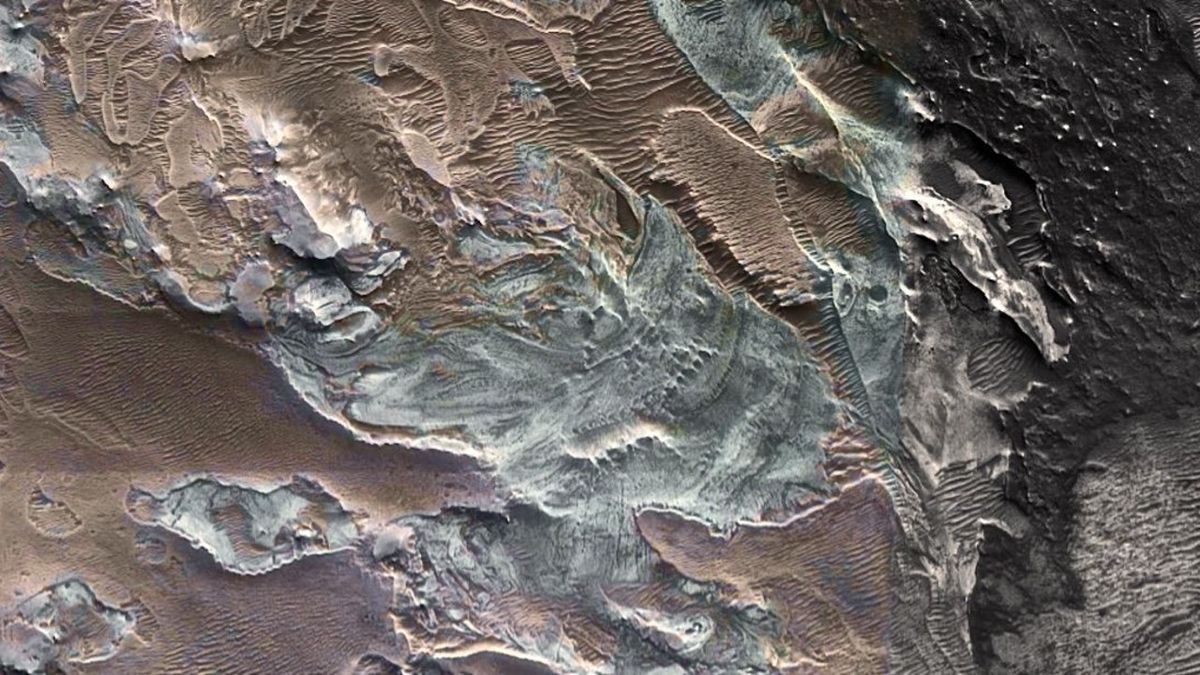Scientists discover signs of 'modern' glacier on Mars that hints at buried water ice
By Samantha Mathewson published about 5 hours ago
Such a discovery could have significant implications for future human exploration on the Red Planet.

a picture of the landscape of Mars from above showing ice deposits
(Image credit: NASA MRO HiRISE and CRISM false color composite. Lee et al. 2023)
Remnants of a modern glacier have been found near Mars' equator, suggesting ice may still exist at shallow depths in the area. If confirmed, such a discovery could have significant implications for future human exploration on the Red Planet.
Using data from the High Resolution Imaging Science Experiment (HiRISE) on NASA's Mars Reconnaissance Orbiter (MRO), researchers from the SETI Institute and the Mars Institute detected light-toned deposits (LTDs) on the Martian surface. These features consist of light-colored sulfate salts, crevasse fields and moraine bands, which are signs of a "relict glacier."
This relict glacier is located near Mars' equator at 7° 33' S, 93° 14' W, and is estimated to be 3.7 miles (6 kilometers) long and up to 2.5 miles (4 km) wide, with a surface elevation reaching up to 1.1 miles (1.7 km), according to a statement(opens in new tab) from the SETI Institute.
"What we've found is not ice, but a salt deposit with the detailed morphologic features of a glacier," Pascal Lee, lead author of the study and a planetary scientist with the SETI and Mars Institutes, said in the statement. "What we think happened here is that salt formed on top of a glacier while preserving the shape of the ice below, down to details like crevasse fields and moraine bands."
More:
https://www.space.com/mars-modern-glacier-buried-water
